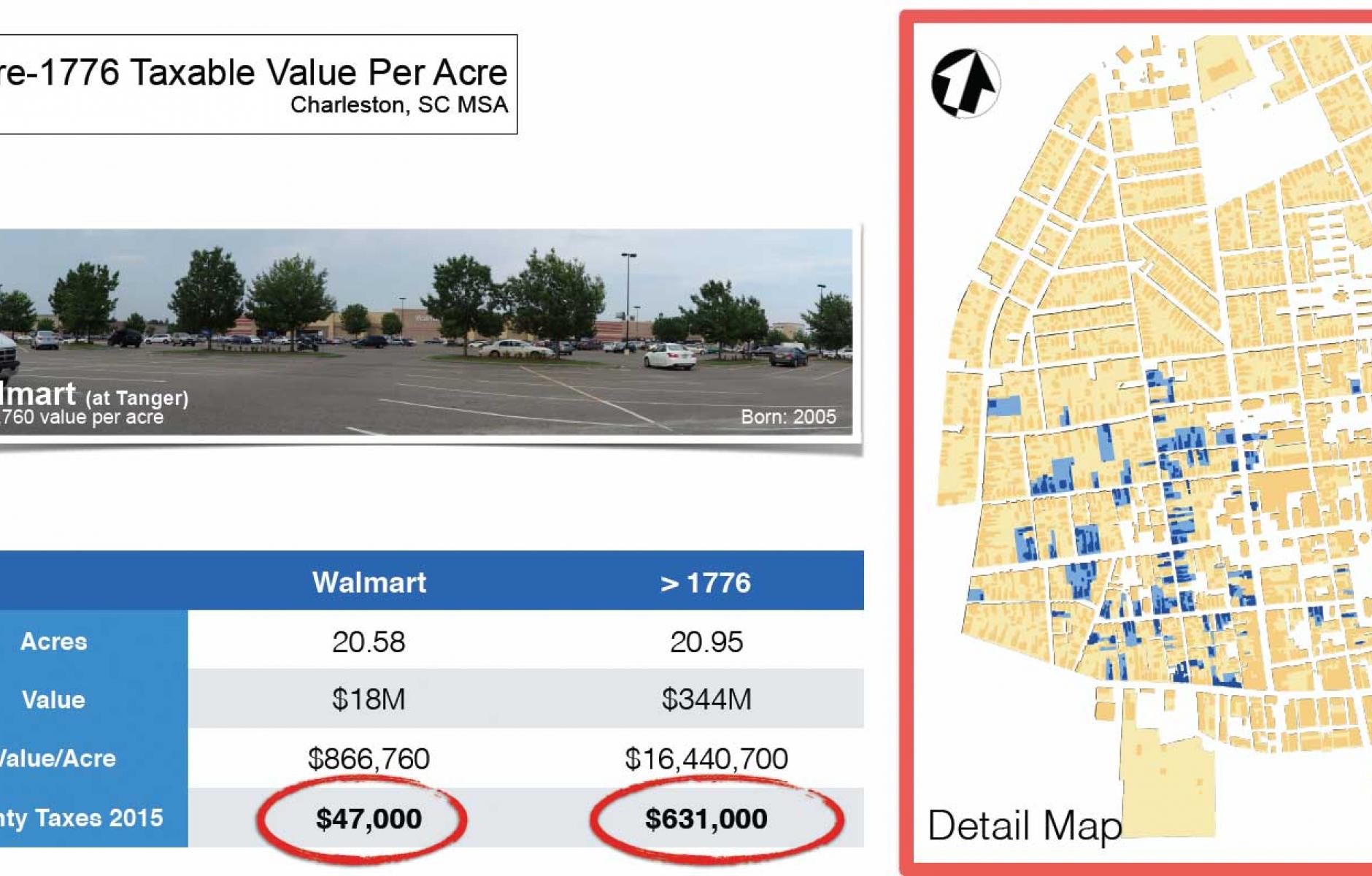
Built-to-last versus throwaway development
Big box stores tend to be used up and abandoned fairly quickly. Sometimes they are repurposed, but often demolished, within a generation. Why do some other properties last and last, maintained by generation after generation, contributing to tax rolls and community wealth?
Joe Minicozzi of Urban3, who conducts fascinating economic studies of communities, compared the value of America's premier big box store, Walmart, to pre-1776 properties in Charleston, South Carolina. Who knew that even in Charleston so many colonial buildings, including residential and mixed-use, are still standing? And their value is astonishing. On the same acreage, pre-Revolutionary War buildings generate 19 times the value of this 2005 Walmart—built and owned by the world's biggest corporation in its prime.
Walmart may use green building technologies in some of its stores, but two-and-a-half-century-old historic buildings are truly sustainable and adaptable. Their great value proves that people today find them just as useful as the contemporaries of George Washington. Maybe we can learn something from our ancestors, who were not so different from us.




